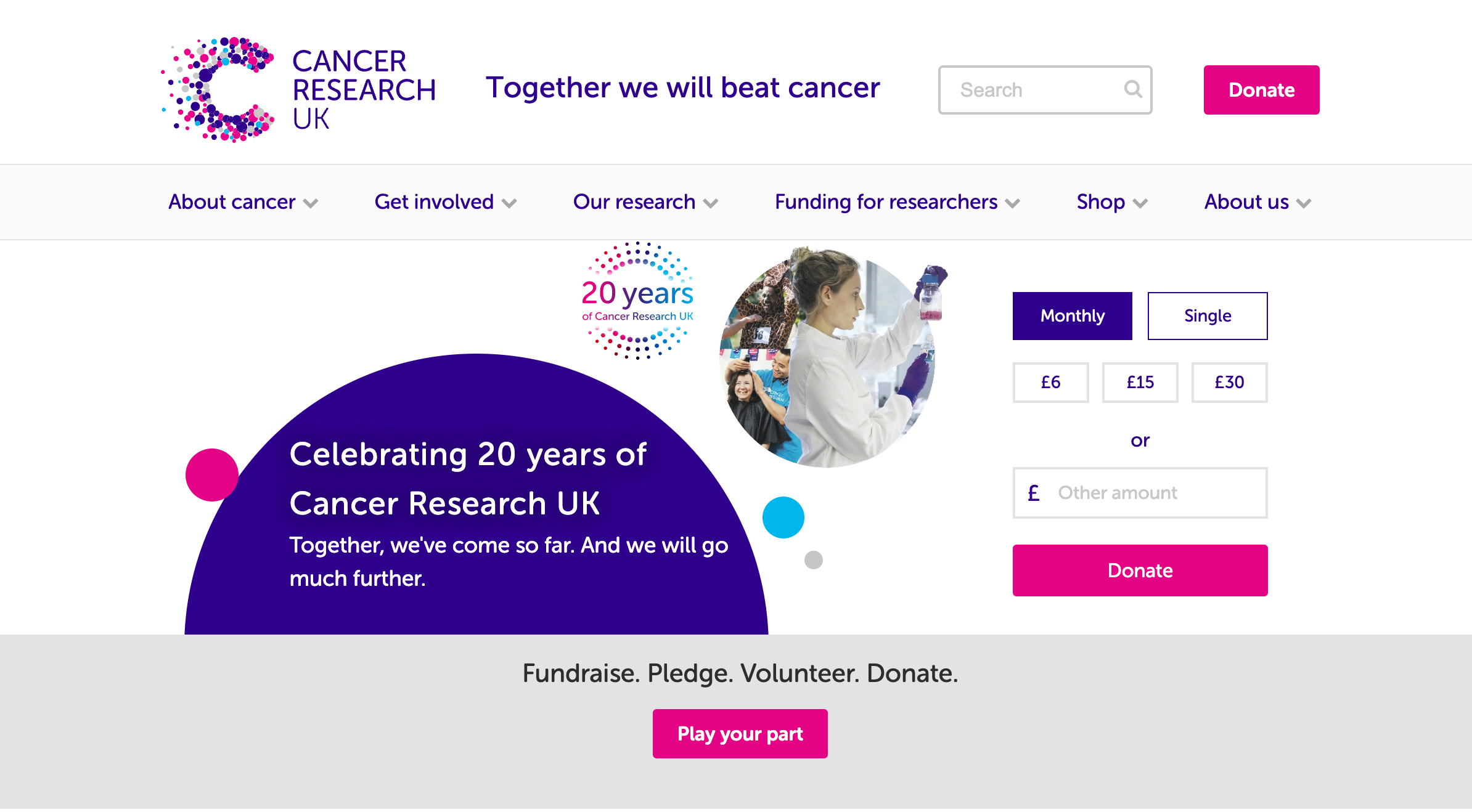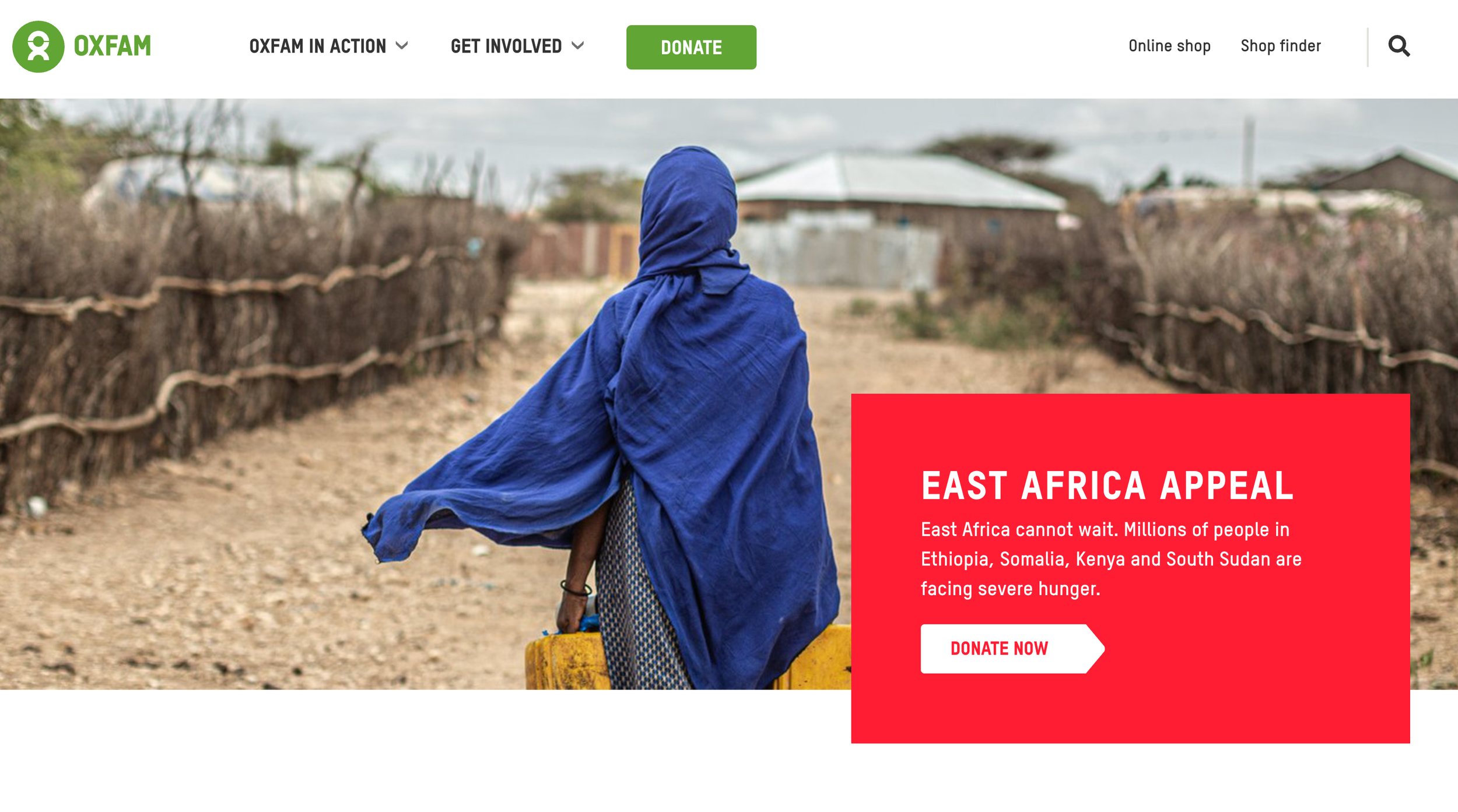How to set up a donation website in 6 steps
How to set up a donation website in 6 steps
Are you wondering how to raise donations for your charity? Whatever cause you’re hoping to raise funds for, diving into the world of crowdfunding can seem intimidating. The following steps will work for most organisations, but have been curated based on our experience making websites for our clients.
Encouraging and inspiring people to donate involves a range of activities around a crowdfunding page — and once you break them down, the process is quite simple.
So if you are planning to accept donations for your non-profit organization, charity or social enterprise, here’s how to create a donation website in 6 easy steps.
Step 1: Design your donation page
Your donation page is the heart of this crowdfunding campaign. It’s where people can read what it’s all about, see that you and your campaign are trustworthy and verified, and of course — make a donation.
There are a number of different platforms and providers you can go with to host your crowdfunding page — but here’s a few important information points you should make sure to include.
The mission of the organization:
People want to know what you stand for, and why this campaign is so important to you. Your organization’s mission will not only make them aware of your existence, but will give them further cause to donate.
That said, this is the most essential part of your page and should be the first thing that visitors see when they come to your website.
The organization’s branding:
Building trust is crucial for encouraging potential donors to take the final step. A company’s brand or logo can be that bridge, like a verification badge.
An organization with a clear, unique brand of their own is likely to receive 38% more donated funds compared to campaigns with generic crowdfunder pages. Having a strong brand says that you’re serious about what you do, and that you can be trusted to deliver on the promises of the campaign. Communicating clearly with your unique Tone of Voice (TOV), is also important to help differentiate your organization from others. Check out how to brand your company here.
Image and story of the person being helped by someone from the organization:
People tend to give more if they see evidence of a person who is being helped by the organization. With engaging, emotional images that speak to your cause, you can easily capture the hearts and support of your potential donors. As they say, a picture (or video) is worth a thousand words. This can be achieved through an integrated digital campaign.
Summary of the donations:
Transparency is important. If you want more donors to give, show them the impact of their contributions. They will feel reassured by knowing that their gift really has had a direct impact on the world.
A personal message from the President or board member:
This is effective because it enables your audience to envisage a real human being inside your company, and connect with them as someone already working on this particular cause. It also suggests that you’re organised, reputable, and therefore trustworthy. Communicating this on your website can be important for charities who want to show their authenticity.
Make your goals achievable and request donations:
Remember to know your limits, set attainable goals, and only ask people for money that they can reasonably donate. Setting a reasonable amount can increase your chance of reaching your goals.
Present your goals clearly so that potential donors will know where their donations can make a difference. An example of this would be “donate £10 to help us send £1500 tablets for schools in developing countries”.
Step 2: Create a donation form to gathers donor’s information
Potential donors are all around your organisation, so creating a donation form to gather their information is important. Make sure that the form is friendly and straightforward.
Bear in mind that the purpose of having this form is to make it easier for the donor to give. Their credentials must be kept in a database for future use in case we will need to ask for another donation.
Linking the online donation form from the contact database to collect donor information would be more convenient, and less hassle for your donors. In creating a secure donation form, see to it that the following fields are present:
First name
Last name
Email
Address
Phone number (though don’t make obligatory)
Step 3: Make sure the donation page is shareable
Use social media to expand the reach of your donation campaign. Taking advantage of this opportunity is a must when trying to increase traffic to your site.
Running a social media campaign around your donation drive will help raise to awareness of your organization with wider audiences, and will also help secure more donors. If a person is not able to donate, you may find a donor in the people they are willing to share your campaign with.
Step 4: Structure Automated Receipts and “Thank Yous’
Donors should feel seen and appreciated after supporting your campaign. A simple receipt and ‘thank you’ note can go a long way. By showing your appreciation for their support, you have a greater opportunity of building a stronger relationship with them.
Thankfully, you do not have to do these each time someone donates. Through automation, you can send out receipts and notes to every donor that contributes.
Step 5: Add a Donation Button
Make sure to add a donation button to your website’s homepage. Most organizations place it in the top header bar to make it easier for people to see when they’re on the website. A great donation button should attract someone’s attention right away, so use a bright colour.
Step 6: Drive traffic to your donation page
Increasing awareness of your organisation is pretty much the same as increasing donations. So once you’re set up with the donation page and process, it’s time to boost traffic to your site immediately with content.
Creating a social media content campaign can feel overwhelming in itself. We recommend finding your channels — blogging, Facebook, email newsletters and so on. Then brainstorm a few content ideas for each, and map them out over the course of a few weeks.
These are 3 of our favourite low effort ways to promote a donation campaign:
Blog:
Through blogging you can share your cause, stories related to it, or the reasons why you started a donation page in the first place. By writing engaging and strategic content, the website will be viewed by donors as a trusted source of information. In fact, if you add links to your donation page in the blog, people are more likely to donate.
Why? Because it makes readers feel more involved. Apart from seeing pictures of how their donations make a difference, they can learn about the story behind it.
Social Media:
It has been estimated that over 3.6 billion people worldwide use social media. Over time, this number will keep on expanding. So needless to say, it’s worth getting creative with your content to reach the huge number of potential supporters out there.
Scheduled Emails:
Many people check their emails every day — whether it’s once, twice or even five times a day. While it may seem outdated to some, an email fundraising campaign is still one of the best ways to find donors.
That’s all folks.
We hope you enjoyed that. If you did find it interesting, then please let us know. If you’re interested in creating an effective donation page, but don’t have time to make one yourself, then let us know that too.
Hit the contact button in our navigation bar to send us an email or find our contact number.




